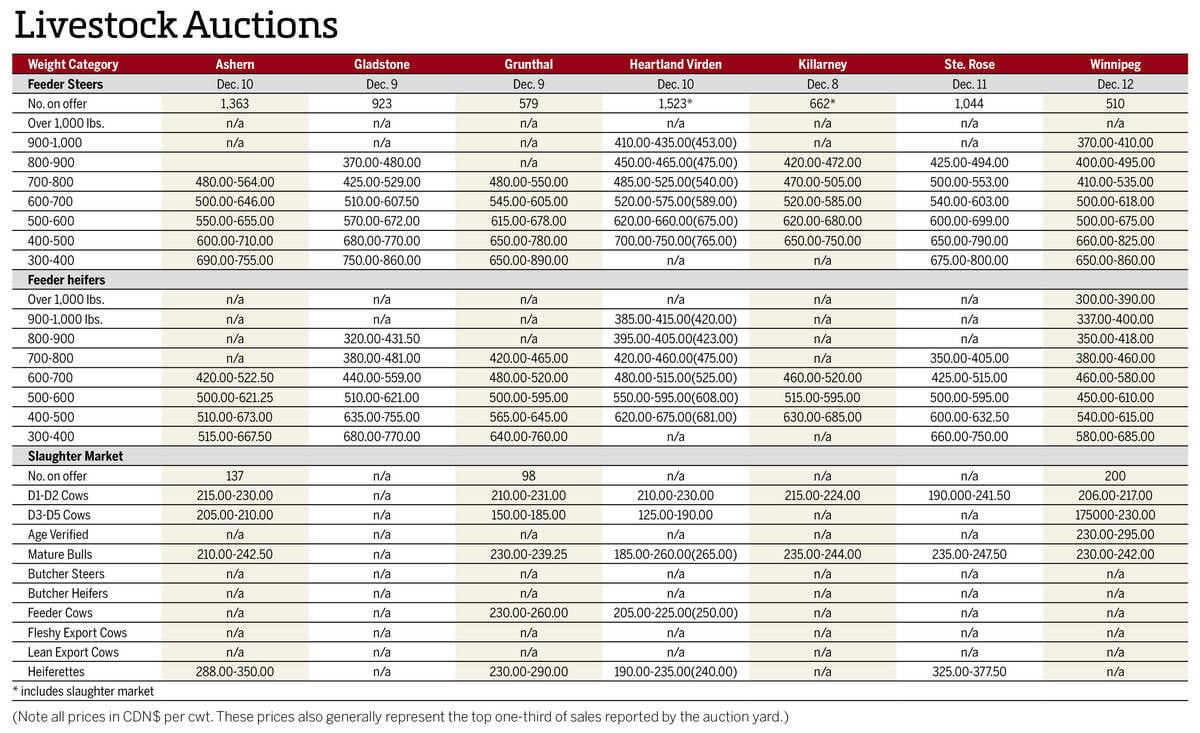Canola contracts on the ICE Futures Canada platform held within a rather narrow range during the week ended Jan. 26, lacking any real clear direction as conflicting outside forces kept the oilseed trading sideways.
On the supportive side, weather worries in Argentina and the resulting gains in Chicago soybeans provided some underlying support. Solid end-user demand and speculative short-covering also accounted for some buying interest during the week.
However, a sharp rise in the Canadian dollar kept canola lagging soybeans to the upside, as the currency climbed above 81 U.S. cents during the week. The firm currency cuts into crush margins, and canola is looking rather expensive on the international market.
Read Also

Manitoba cattle prices Dec. 16
Here’s what local farmers were getting paid last week for their cattle at Manitoba livestock auction marts; prices covering the week Dec. 8-12, 2025.
Adding to the general bearishness in canola are expectations for an increase in planted area this spring. With little to no excitement in most other crop options, especially pulses, it’s looking like canola area could hit a new record in 2018. Agriculture and Agri-Food Canada released its first new-crop estimates of the year on Jan. 25, predicting canola area at 24 million acres. That would be up by a million acres from the previous record set in 2017.
On top of the big acreage ideas, carry-out for the current crop year is also forecast to be rather sizable at two million tonnes. That’s well above anything that would be considered tight, and should be signalling to buyers that there’s little reason to be bidding up the market.
In the U.S., activity in the currency markets was generally supportive for grains and oilseeds during the week as the U.S. dollar index dropped sharply and helped bring some speculative money into agricultural commodities. Weather worries out of Argentina remained at the forefront as well, with dryness in the major soybean- and corn-exporting country keeping some caution in the U.S. futures.
The nearby March soybean contract briefly traded above the psychological US$10-per-bushel mark, but met some resistance at the highs and retreated below that chart point by Friday’s close.
Corn futures hit some of their best levels since early December on the back of short-covering, but supplies in the countryside remain large and any advances should bring in farmer selling to temper the upside.
Minneapolis spring wheat bounced around, showing little direction, but the Chicago and Kansas City winter wheat contracts rose to their best levels in months. In addition to the weakening U.S. dollar bringing in export interest, traders were also keeping an eye on mounting dryness concerns in the southern Plains.
In addition, while seeded winter wheat acres in the U.S. reported by the U.S. Department of Agriculture beat expectations in a Jan. 12 report, the acreage base will still be the lowest in more than 100 years.
















